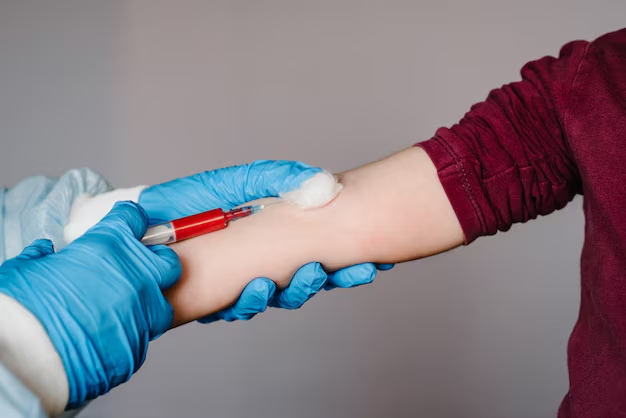How to Test for Lyme Disease: What You Need to Know
Lyme disease is a stealthy adversary, often mistaken for less serious ailments due to its varied symptoms. If you’ve found yourself wondering whether those unexplained aches, fever, or fatigue might be something more, you're not alone. Understanding how to test for Lyme disease can turn questions into clarity and help you take informed next steps for your health.
Understanding Lyme Disease
What Is Lyme Disease?
Lyme disease is an infectious disease caused by the bacterium Borrelia burgdorferi, transmitted through the bite of infected black-legged ticks. While anyone can get Lyme disease, it's more common in certain areas of the United States, particularly the Northeast and Upper Midwest.
Recognizing the Symptoms
Before considering testing, it's crucial to be aware of the symptoms. Early signs of Lyme disease might include:
- Rash: Often appearing as a "bull's-eye," but not always.
- Fever: Similar to the flu, this symptom can be misleading.
- Fatigue: Persistent tiredness that doesn't resolve with rest.
- Joint pain and muscle aches: Often migrating and sometimes severe.
Given these variable symptoms, testing becomes an essential step in diagnosing Lyme disease accurately.
Tests Commonly Used for Diagnosing Lyme Disease
Initial Screening: Enzyme Immunoassay (EIA) or Immunofluorescence Assay (IFA)
Most healthcare providers begin with an Enzyme Immunoassay (EIA) or Immunofluorescence Assay (IFA). These tests detect antibodies against Borrelia burgdorferi.
- Purpose: Initial screening to determine if further testing is necessary.
- Outcomes: Positive, negative, or indeterminate results, which guide the next steps.
Confirmatory Testing: Western Blot
If the initial test is positive or indeterminate, a Western Blot test is typically the next step. This test is more specific and used to confirm the presence of antibodies to different proteins of the Lyme bacterium.
- Understanding Results: Multiple bands on the Western blot must be positive for a definitive diagnosis.
Direct Detection Methods
In some cases, especially where symptoms persist despite previous negative tests, polymerase chain reaction (PCR) might be used. This test looks for Borrelia DNA in the blood, cerebrospinal fluid, or other tissues.
- Limitations: While highly specific, it is less frequently used because the bacteria can be present in body fluids intermittently.
The Importance of Timing in Testing
Early vs. Late-Stage Testing
The time at which you undergo testing significantly impacts the results:
- Early Stage: Antibodies may not have developed yet, leading to false negatives.
- Late Stage: Higher likelihood of antibodies being present, making tests more reliable.
Understanding these dynamics underscores the importance of timing and reinforcements in cases of early suspicion and lingering symptoms.
Factors Influencing Test Results
Cross-Reactivity and Coinfections
Lyme disease tests may cross-react with other conditions or infections, leading to false positives or negatives. Coinfections transmitted by ticks, such as babesiosis or anaplasmosis, may require additional testing for a comprehensive understanding of your health.
Geographic Prevalence and Risk Factors
Consider the regional prevalence when deciding about tests. High-risk zones with a known tick population increase the probability of Lyme disease, particularly after a noticeable tick bite or exposure.
When to Consult a Doctor
Persistent Symptoms
If you have persistent or severe symptoms and reside or have visited high-risk areas, seek medical evaluation promptly.
Exposure History
Discuss your tick exposure history even if symptoms seem mild or typical of other conditions. This history can guide your healthcare provider in choosing the appropriate testing and treatment approach.
Next Steps After Testing
Understanding Test Results
- Positive Result: Indicates Lyme disease, prompting discussions about treatment options.
- Negative Result but Persistent Symptoms: Might require retesting or exploring other diagnoses.
- Indeterminate or Uncertain Results: Consider follow-up tests or a specialist’s evaluation.
Exploring Treatment Options
While this guide isn’t a substitute for professional medical advice, a positive diagnosis typically leads to antibiotic treatment, which is significantly more effective when initiated early. Your healthcare provider will tailor the treatment based on individual case details, including coinfections and symptom severity.
Key Takeaways
Understanding how to test for Lyme disease involves a thoughtful process of timing, test selection, and expert medical consultation. Armed with knowledge, you can navigate the uncertainty of Lyme disease and approach your health journey confidently.
Summary: Lyme Disease Testing Essentials 🦠
- Recognize Symptoms: Rash, fever, fatigue, joint pain.
- Testing Sequence:
- Enzyme Immunoassay (EIA): Initial screening.
- Western Blot: Confirmatory.
- PCR: Direct pathogen detection (specific cases).
- Timing Matters: Early vs. late-stage implications.
- Considerations:
- Geographic Risk.
- Cross-Reactivity/Coinfections.
- Consult a Doctor: If persistent symptoms post-exposure.
- Post-Test Options: Treatment tailored to diagnosis and symptoms.
Approach Lyme disease testing and management with deliberate steps for better health outcomes. 🌿
